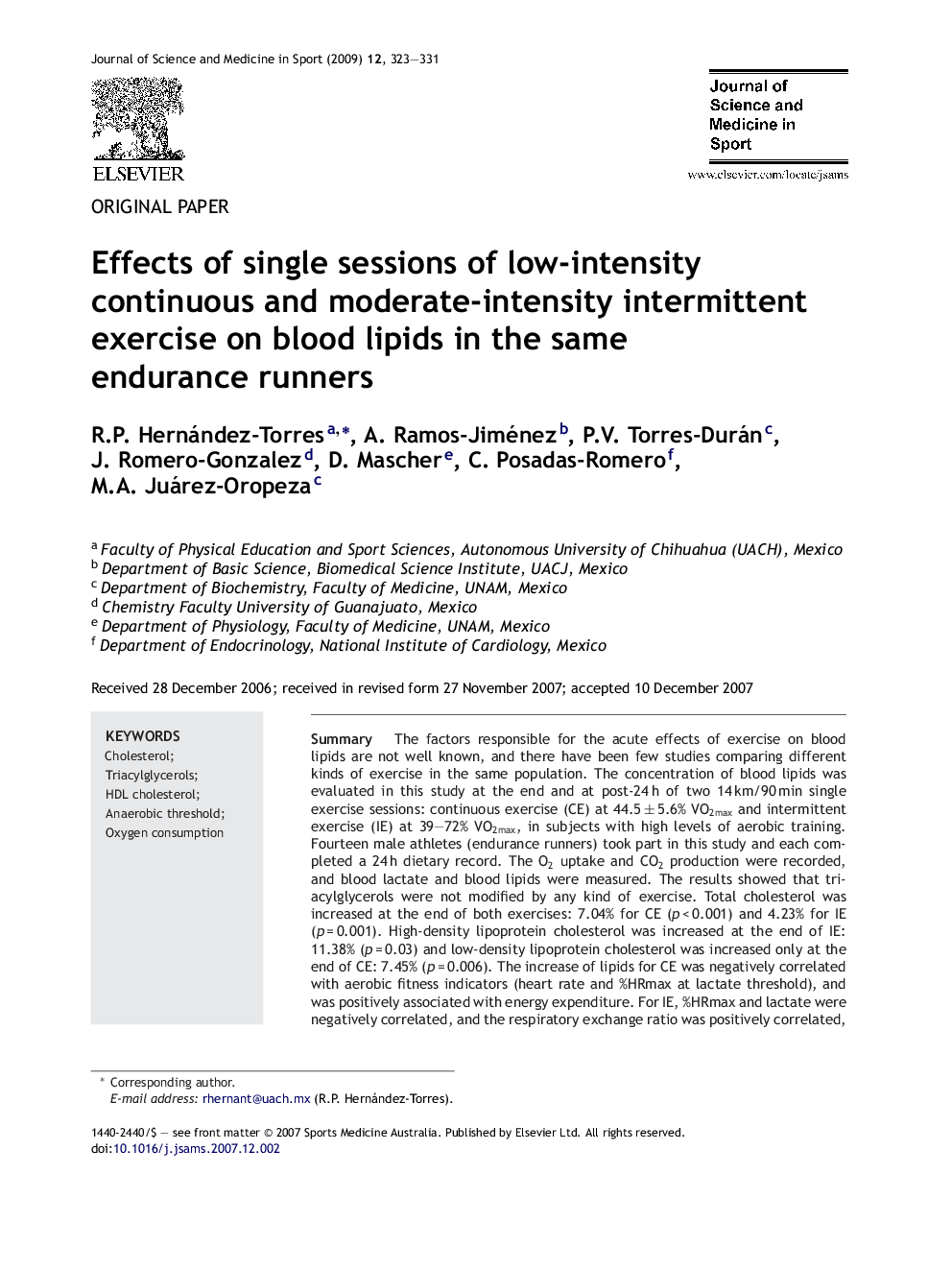| Article ID | Journal | Published Year | Pages | File Type |
|---|---|---|---|---|
| 2703280 | Journal of Science and Medicine in Sport | 2009 | 9 Pages |
SummaryThe factors responsible for the acute effects of exercise on blood lipids are not well known, and there have been few studies comparing different kinds of exercise in the same population. The concentration of blood lipids was evaluated in this study at the end and at post-24 h of two 14 km/90 min single exercise sessions: continuous exercise (CE) at 44.5 ± 5.6% VO2max and intermittent exercise (IE) at 39–72% VO2max, in subjects with high levels of aerobic training. Fourteen male athletes (endurance runners) took part in this study and each completed a 24 h dietary record. The O2 uptake and CO2 production were recorded, and blood lactate and blood lipids were measured. The results showed that triacylglycerols were not modified by any kind of exercise. Total cholesterol was increased at the end of both exercises: 7.04% for CE (p < 0.001) and 4.23% for IE (p = 0.001). High-density lipoprotein cholesterol was increased at the end of IE: 11.38% (p = 0.03) and low-density lipoprotein cholesterol was increased only at the end of CE: 7.45% (p = 0.006). The increase of lipids for CE was negatively correlated with aerobic fitness indicators (heart rate and %HRmax at lactate threshold), and was positively associated with energy expenditure. For IE, %HRmax and lactate were negatively correlated, and the respiratory exchange ratio was positively correlated, with the lipid increase. We conclude that in trained male athletes, a 14 km run in 90 min induced different changes of lipid profile if the exercise was done continuously or intermittently, and that in CE the extent of these increases was influenced by aerobic fitness.
